The Impact of Support Type on the Reliability of Steel Trusses Subjected to the Action of a Fire
Abstract
:1. Introduction
2. Methods
2.1. Thermal-Static Analysis
- the structure was analyzed in the phase of a developed fire, adopting a standard fire curve [29],
- combustion gases have been assumed to affect each wall of the cross-section,
- changes in the thermal properties of insulation materials were omitted; changes in the thermal and mechanical properties of steel were adopted according to the recommendations of Eurocode [30],
- geometrical relationships were assumed to be linear,
- it was assumed that the structure was protected against the loss of stability,
- rheological impacts were omitted,
- climatic loads were neglected,
- only permanent load (concentrated forces) and temperature act on trusses,
- concentrated forces were applied in nodes,
- distribution of temperature in the cross-section was considered to be constant,
- the connections were pinned,
- the structures were analyzed in the elastic range (the Hook’s law is valid).
2.2. Reliability Analysis
- the adopted random variables included geometrical characteristics of the cross-section area (A), mechanical properties of material (yield point fy), and the value of the effect of actions (E),
- resistance of single elements was approximated by normal distribution,
- random variables (x) were characterized by normal distribution with average value () and standard deviation (),
- randomness in the calculations of the temperature of elements and combustion gases were not taken into account,
- it was assumed that random variables were not correlated and that they had a normal distribution,
- the single mechanisms were separated.
3. Results
3.1. Thermal-Static Analysis
3.2. Reliability Analysis
4. Discussion
5. Conclusions
Author Contributions
Funding
Conflicts of Interest
Appendix A
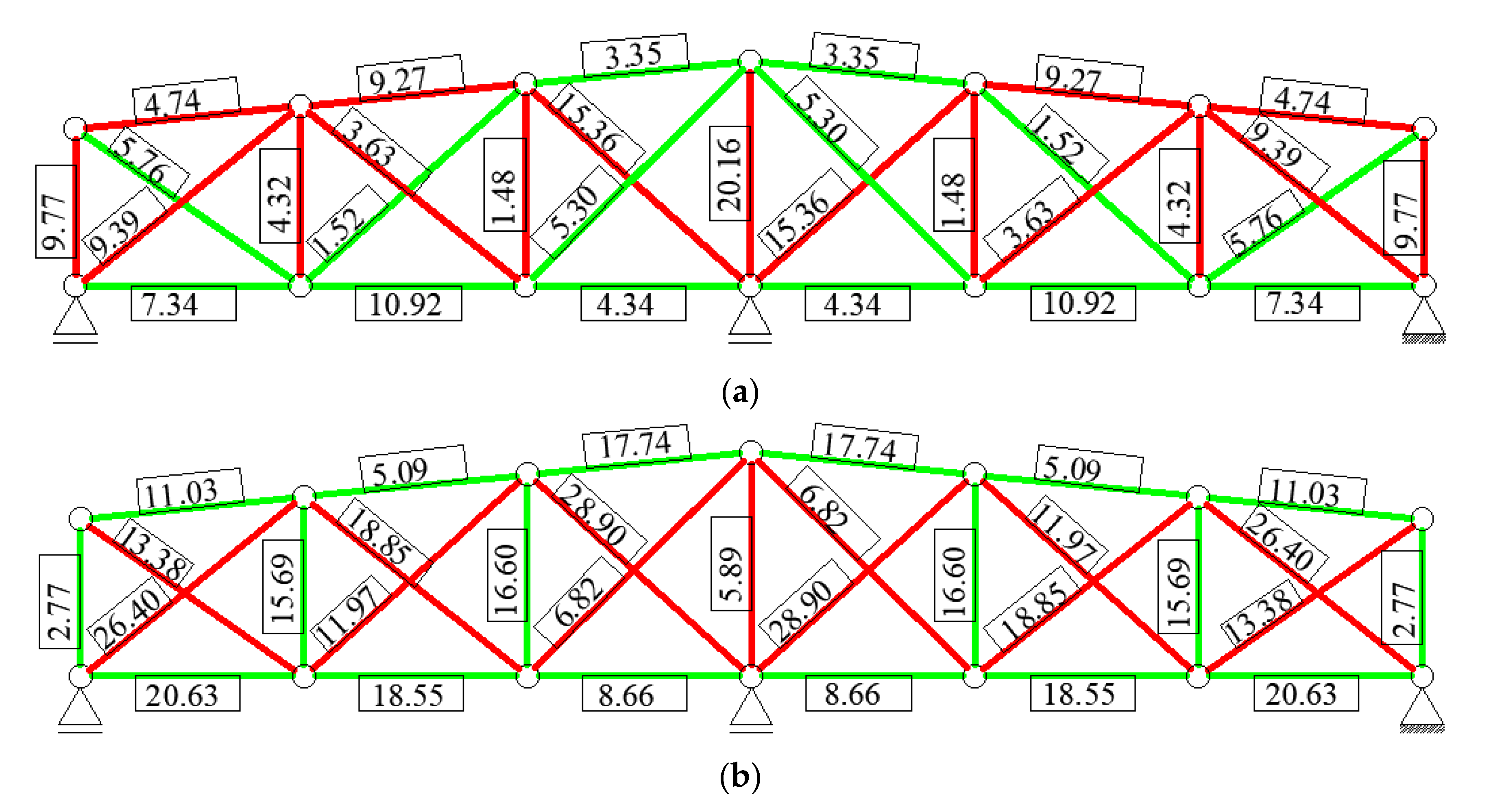
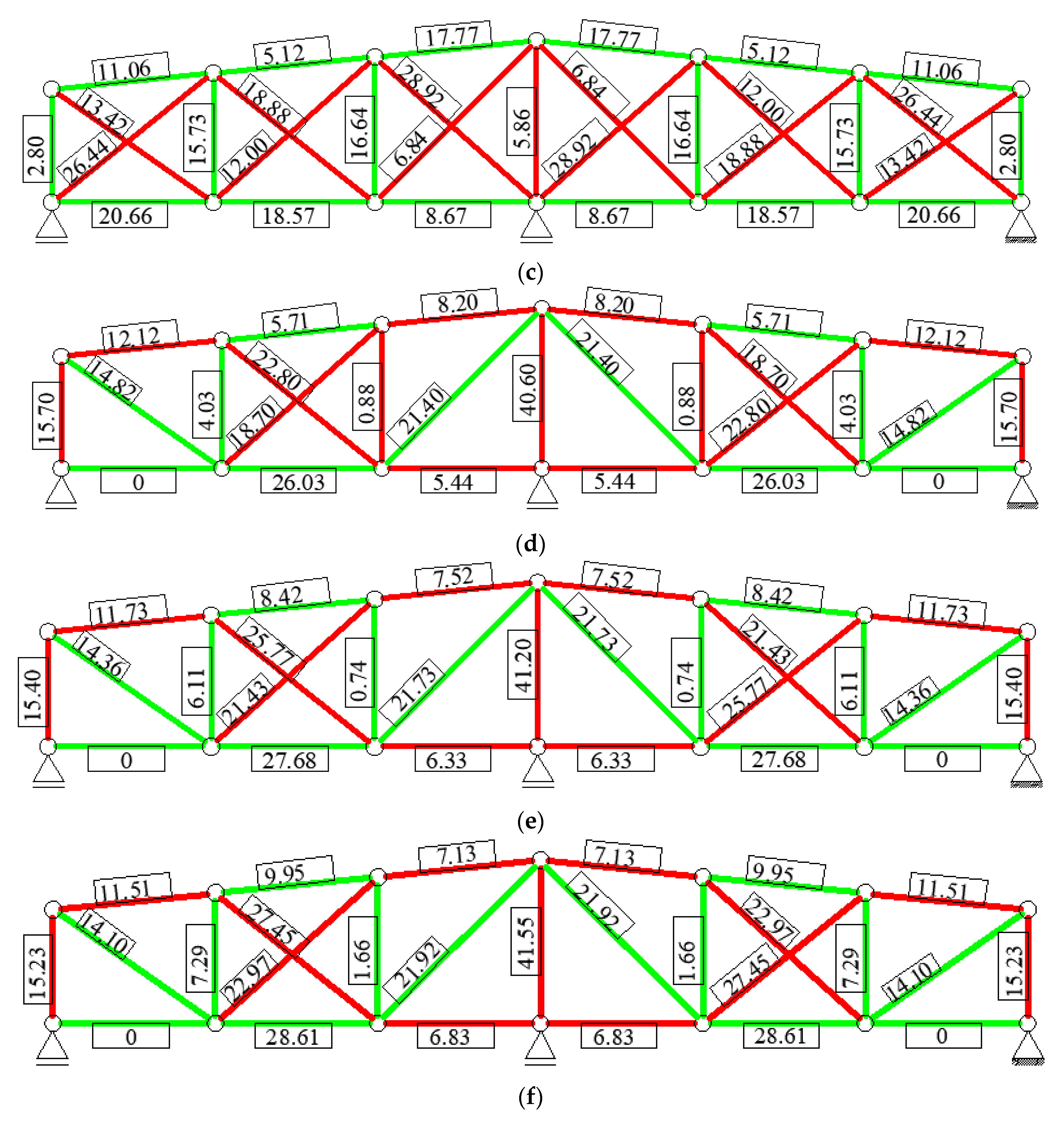


References
- Biegus, A. Fire damages and steel building roof repairs. In Proceedings of the XXVI Confererence “Awariebudowlane”, Międzyzdroje, Poland, 21–24 May 2013. (In Polish). [Google Scholar]
- Bramhanand, V.; Patil, M.; Ramgir, S. Study of structural steel members under thermal loading. Int. J. Sci. Eng. Technol. Res. 2016, 5, 2775–2781. [Google Scholar]
- Porcari, G.-L.F.; Zalok, E.; Mekky, W. Fire induced progressive collapse of steel building structures: A review of the mechanisms. Eng. Struct. 2015, 82, 261–267. [Google Scholar] [CrossRef]
- Pournaghshband, A.; Afshan, S.; Theofanous, M. Elevated temperature performance of restrained stainless steel beams. Structures 2019, 22, 278–290. [Google Scholar] [CrossRef]
- Khademi, F. Enhancing Load Rating of Railway Truss Bridges through a Hybrid Structural Analysis and Instrumentation Procedure. Ph.D. Thesis, Illinois Institute of Technology, Chicago, IL, USA, 2017. [Google Scholar]
- Khademi, F. Load Rating of Railway Bridges by Analysis and Testing. Master’s Thesis, Illinois Institute of Technology, Chicago, IL, USA, 2015. [Google Scholar]
- Grubišić, M.; Ivošević, J.; Grubišić, A. Reliability analysis of reinforced concrete frame by finite element method with implicit limit state functions. Buildings 2019, 9, 119. [Google Scholar] [CrossRef] [Green Version]
- Zabojszcza, P.; Radoń, U. The impact of node location imperfections on the reliability of single-layer steel domes. Appl. Sci. 2019, 9, 2742. [Google Scholar] [CrossRef] [Green Version]
- Low, B.K. FORM, SORM, and spatial modelling in geotechnical engineering. Struct. Saf. 2014, 49, 56–64. [Google Scholar] [CrossRef]
- Zhao, Y.-G.; Ono, T. A general procedure for first/second order reliability method (FORM/SORM). Struct. Saf. 1999, 21, 95–112. [Google Scholar] [CrossRef]
- Far, M.S.; Wang, Y. Approximation of the Monte Carlo Sampling Method for reliability analysis of structures. Math. Probl. Eng. 2019, 2016, 1–9. [Google Scholar]
- Anosh, J. Monte Carlo with Importance Sampling Markow Chain Monte Carlo Methods in Quantum Field Theories: A Modern Primer. arXiv 2020, arXiv:1912.10997. [Google Scholar]
- Potrzeszcz-Sut, B. Reliability analysis of shell truss structure by hybrid Monte Carlo Method. J. Theor. Appl. Mech. 2020, 58, 469–482. [Google Scholar] [CrossRef]
- Zabojszcza, P.; Radoń, U. Stability analysis of the single-layer dome in probabilistic description by the Monte Carlo method. J. Theor. Appl. Mech. 2020, 58, 425–436. [Google Scholar] [CrossRef]
- Hassoun, M.H. Fundamentals of Artificial Neural Networks; MIT Press: Cambridge, MA, USA; London, UK, 1955. [Google Scholar]
- Dudzik, A.; Potrzeszcz-Sut, B. The structural reliability analysis using explicit neural state functions. MATEC Web Conf. 2018, 262, 1–6. [Google Scholar] [CrossRef]
- Thoft-Christensen, P.; Baker, M.J. Structural Reliability Theory and Its Applications; Springer: Berlin/Heidelberg, Germany; New York, NY, USA, 1982. [Google Scholar]
- Thoft-Christensen, P.; Baker, M. Application of Structural Systems Reliability Theory; Springer: Berlin/Heidelberg, Germany, 1986. [Google Scholar]
- Qiu, Z.; Yang, D.; Elishakoff, I. Probabilistic interval reliability of structural systems. Int. J. Solids Struct. 2008, 45, 2850–2860. [Google Scholar] [CrossRef] [Green Version]
- Silicki, A.; Silicka, E. The method of optimum strengthening of spatial steel truss with usage of sensitivity analysis of the system reliability index. Pomiary Automatyka Kontrola 2010, 56, 613–616. (In Polish) [Google Scholar]
- Mochocki, W.; Obara, P.; Radoń, U. Impact of the wind load probability distribution and connection types on the reliability index of truss towers. J. Theor. Appl. Mech. 2020, 58, 403–414. [Google Scholar] [CrossRef]
- Mochocki, W.; Radoń, U. Analysis of basic failure scenarios of a truss tower in a probabilistic approach. Appl. Sci. 2019, 9, 2662. [Google Scholar] [CrossRef] [Green Version]
- Kubicka, K.; Radoń, U. Influence of the buckling coefficient randomness on the reliability index value under fire conditions. Arch. Civ. Eng. 2018, 64, 173–179. [Google Scholar] [CrossRef] [Green Version]
- Inerhunwa, I.; Wang, Y.C.; Su, M. Reliability analysis of intumescent coating protected steel members under the standard fire condition. Fire Saf. J. 2019, 104, 43–56. [Google Scholar] [CrossRef]
- Balogh, T.; Vigh, L.G. Complex and comprehensive method for reliability calculation of structures under fire exposure. Fire Saf. J. 2016, 86, 41–52. [Google Scholar] [CrossRef] [Green Version]
- Kubicka, K.; Obara, P.; Radoń, U.; Szaniec, W. Assessment of steel truss fire safety in terms of the system reliability analysis. Arch. Civ. Mech. Eng. 2019, 19, 417–427. [Google Scholar] [CrossRef]
- Kłosowska, J.; Obara, P.; Gilewski, W. Self-stress control of real civil engineering tensegrity structures. In Proceedings of the 22nd International Conference on Computer Methods in Mechanics (CMM) 2017, Lublin, Poland, 13–16 September 2017; Volume 1922. [Google Scholar]
- Gilewski, W.; Kłosowska, J.; Obara, P. The influence of self-stress on behavior of tensegrity-like real structure. In Proceedings of the 26th R-S-P Seminar on Theoretical Foundation of Civil Engineering, Warsaw, Poland, 19–21 August 2017; Volume 117. [Google Scholar]
- European Committee for Standardization. Eurocode 1: Actions on Structures Part 1–2: General Actions: Actions on Structures Exposed to Fire; PN-EN1991-1-2; CEN-CENELEC: Brussels, Belgium, 2002. [Google Scholar]
- European Committee for Standardization. Eurocode 3: Design of Steel Structures Part 1-2: General Rules—Structural Fire Design; PN-EN1993-1-2; CEN-CENELEC: Brussels, Belgium, 2005. [Google Scholar]
- Franssen, J.M.; Real, P.V. Fire Design of Steel Structures, 2nd ed.; John Wiley & Sons: Hoboken, NJ, USA, 2015. [Google Scholar]
- Turkowski, P.; Sulik, P. The Fire Design of Steel Structures According to Eurocode 3; Instytut Techniki Budowlanej: Warsaw, Poland, 2015. (In Polish) [Google Scholar]
- Kubicka, K.; Pawlak, U.; Radoń, U. Influence of the thermal insulation type and thickness on the structure mechanical response under fire conditions. Appl. Sci. 2019, 9, 2606. [Google Scholar] [CrossRef] [Green Version]
- Biegus, A. Probabilistic Analysis of Steel Structures; PWN: Wroclaw, Poland, 1977. (In Polish) [Google Scholar]
- JCSS Probabilistic Model Code. Available online: https://www.jcss-lc.org/jcss-probabilistic-model-code/ (accessed on 2 October 2020).
- Maślak, M. Assessment of the safety level ensured by a steel load-bearing structure when subjected to a fire. In Proceedings of the ICASS 2015: Eighth International Conference on Advances in Steel Structures; IJSSD 2015 Symposium on Progress in Structural Stability and Dynamics, Lisbon, Portugal, 21–24 July 2015. [Google Scholar]
- Fontana, M.; Favre, J.P.; Fetz, C. A survey of 40,000 buildings fires in Switzerland. Fire Saf. J. 1999, 32, 137–158. [Google Scholar] [CrossRef]
- Hopkin, D.; Fu, I.; Van Coile, R. Adequate fire safety for structural steel elements based upon life-time cost optimization. Fire Saf. J. 2020, in press. [Google Scholar] [CrossRef]
- Hingorani, R.; Tanner, P.; Zanuy, C. Life safety risk based requirements for concrete structures in accidental situations caused by gas explosions. Struct. Saf. 2019, 76, 184–196. [Google Scholar] [CrossRef]
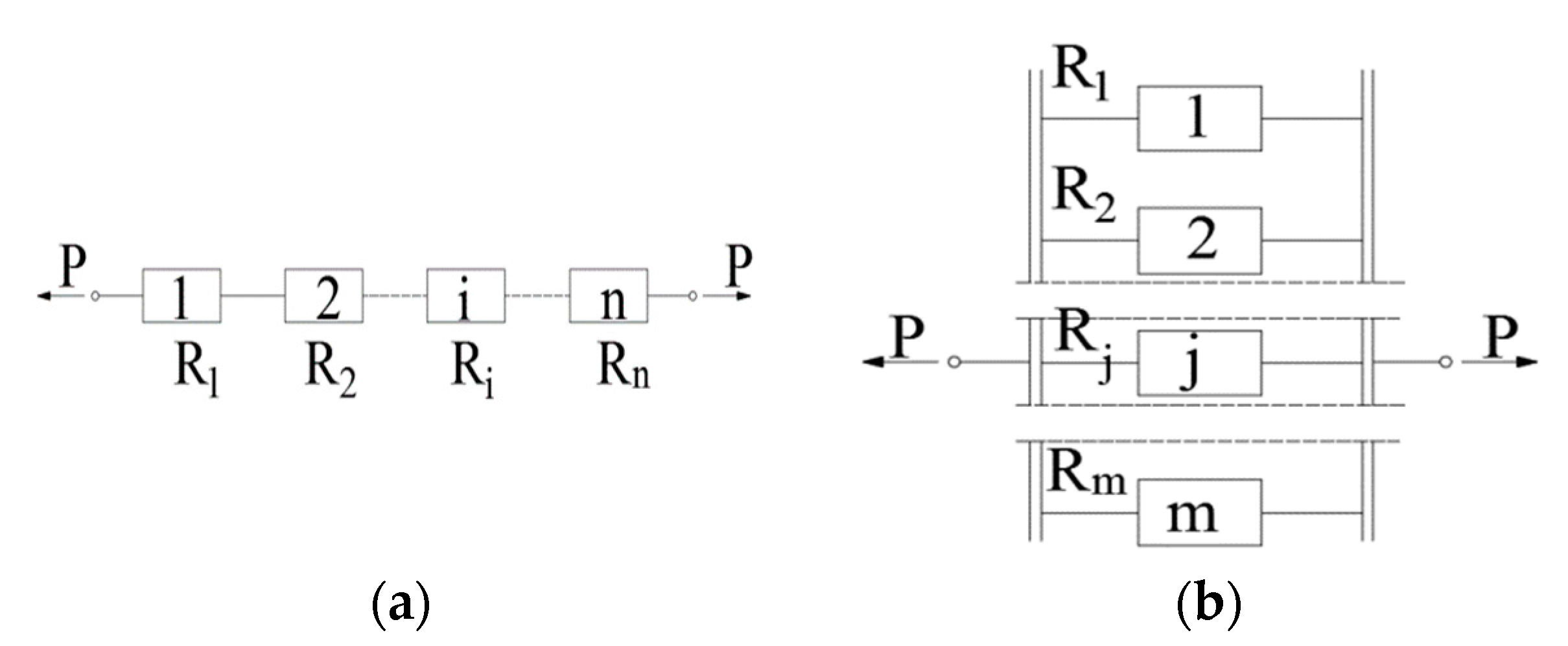
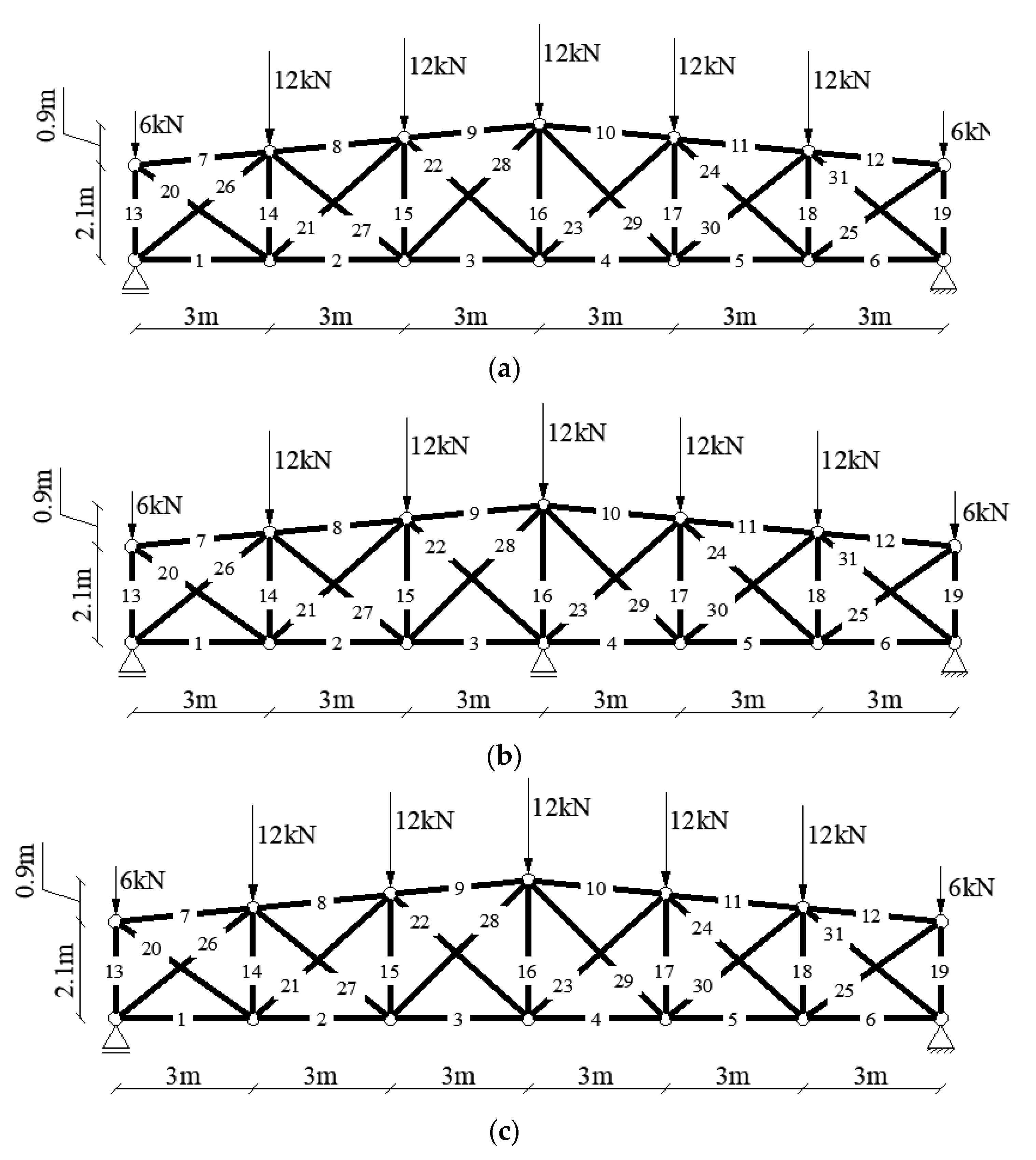
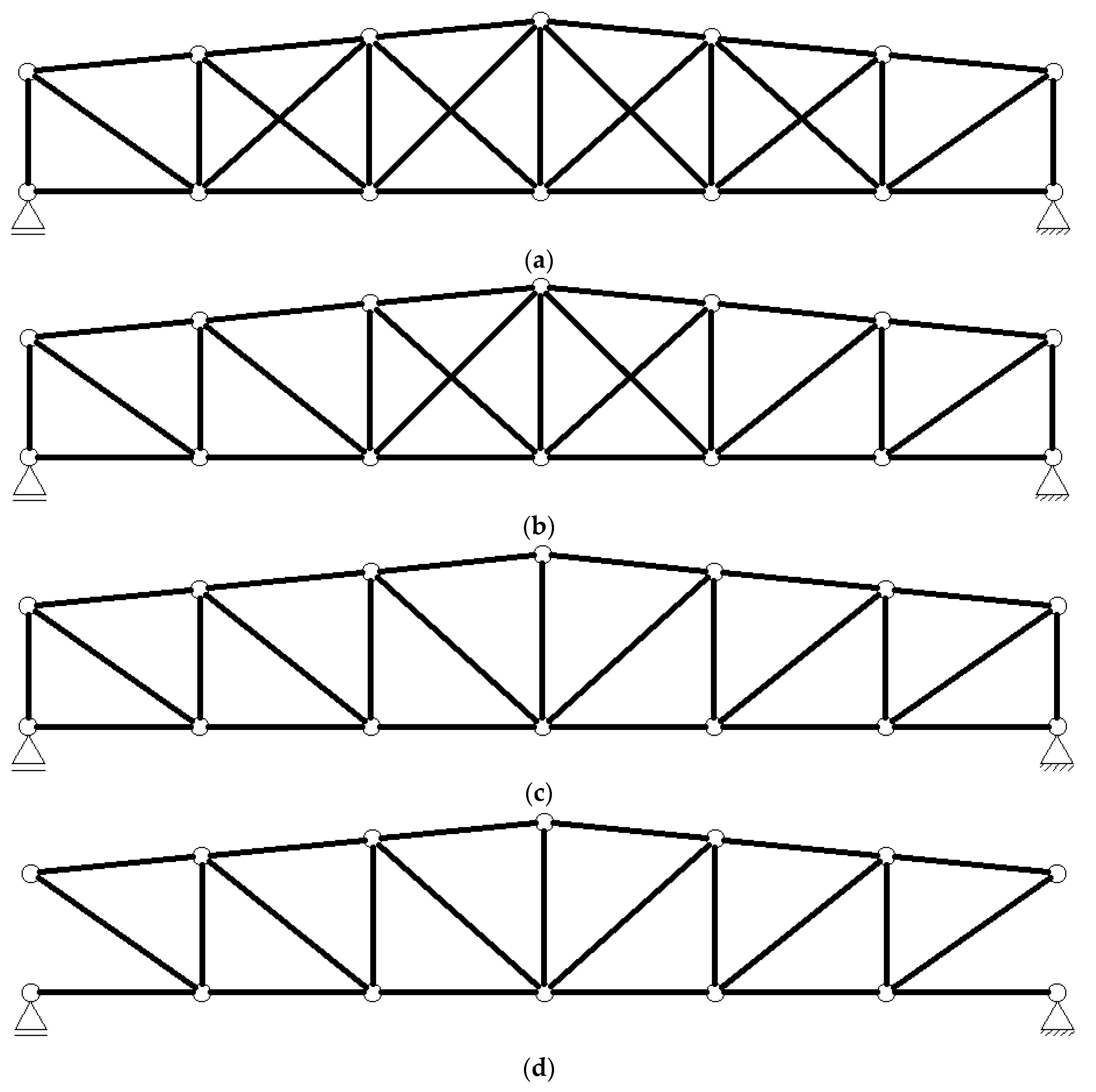
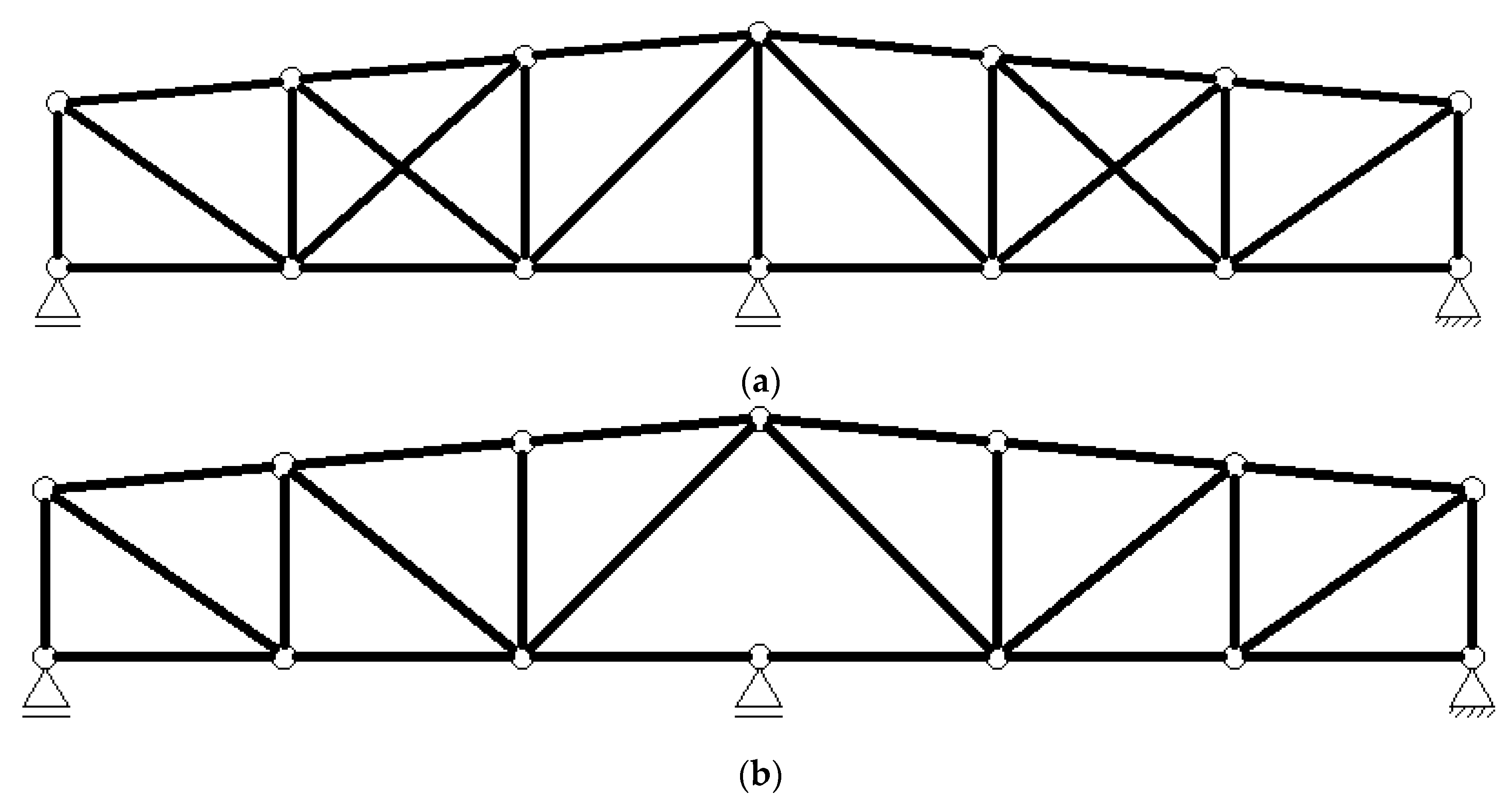
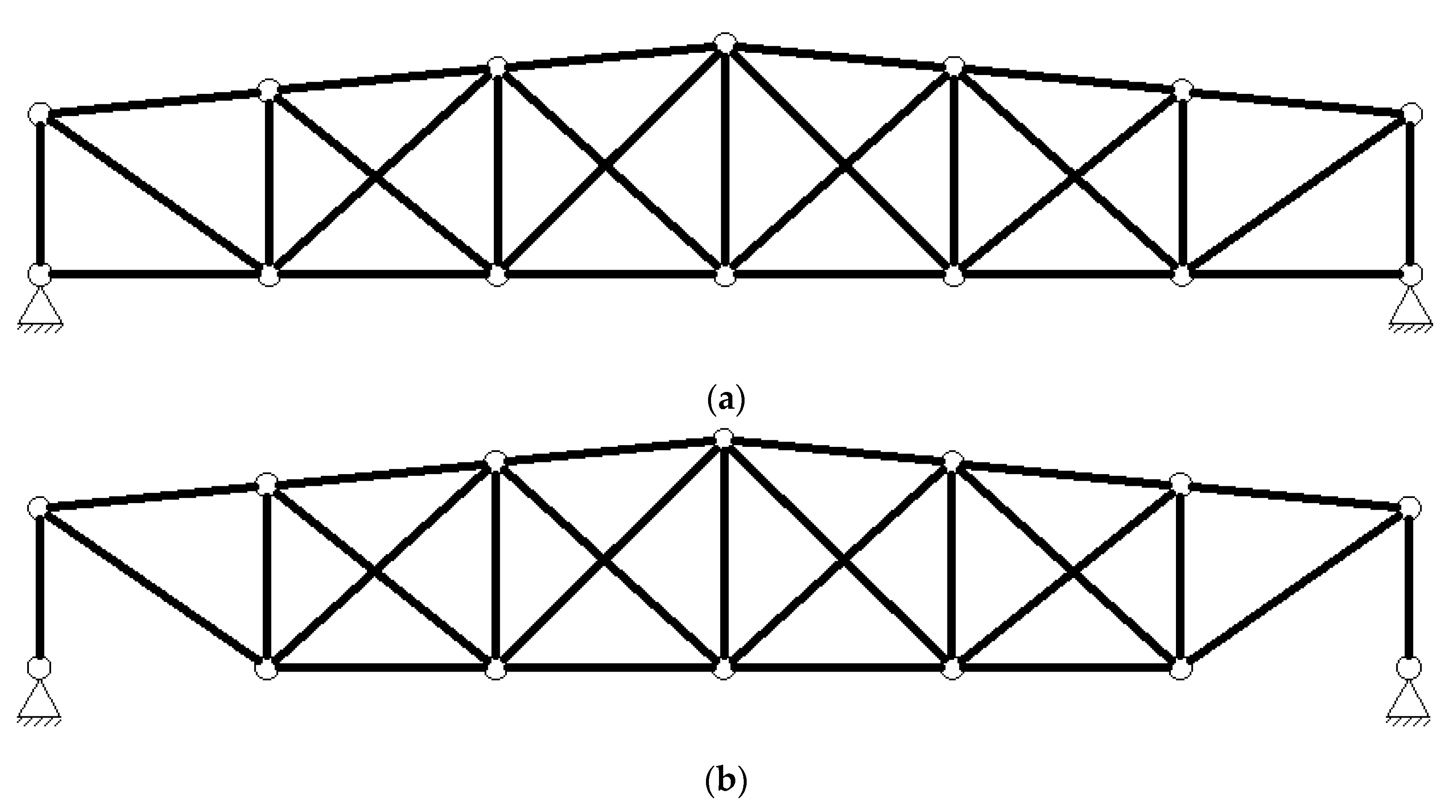
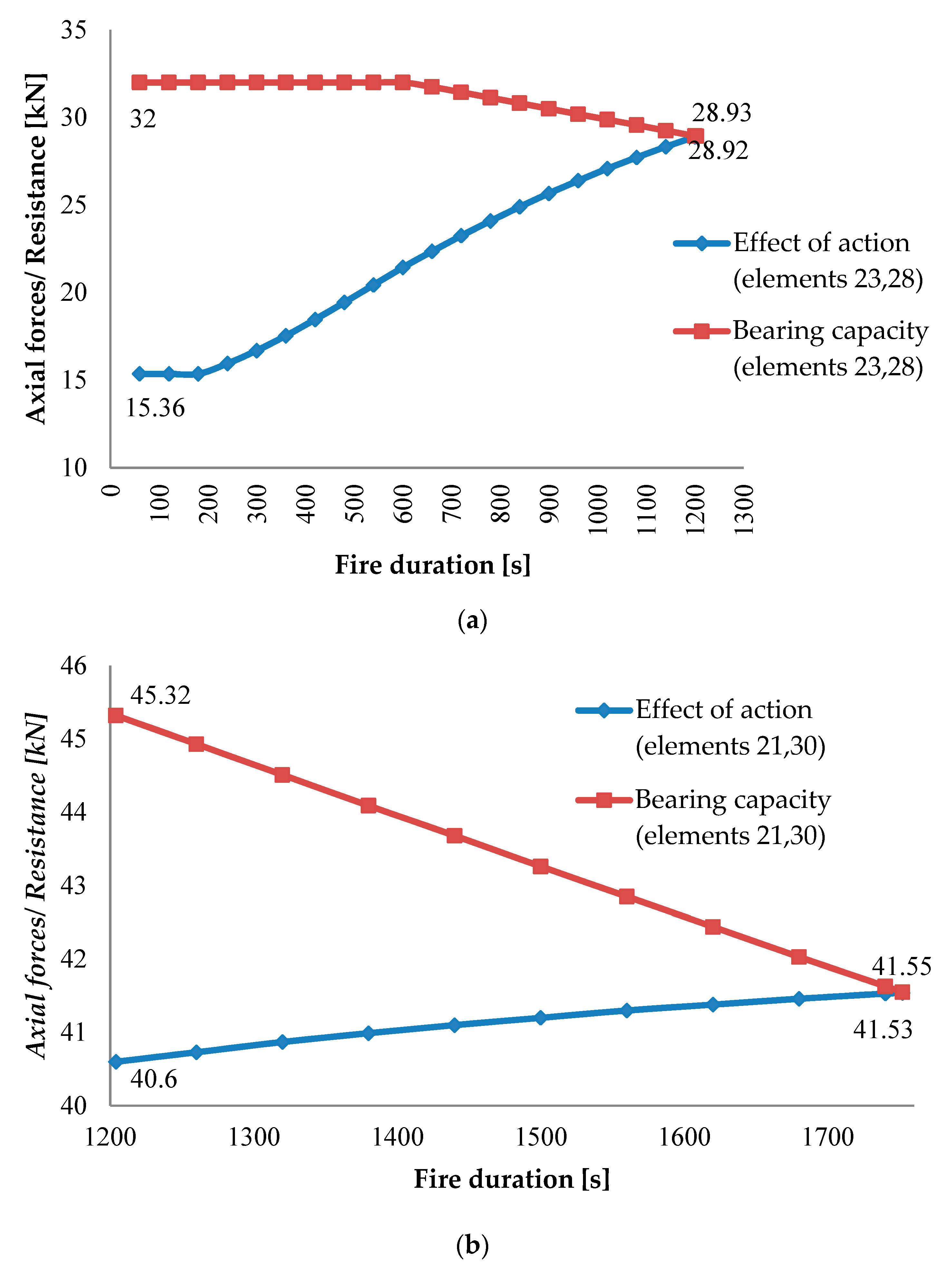
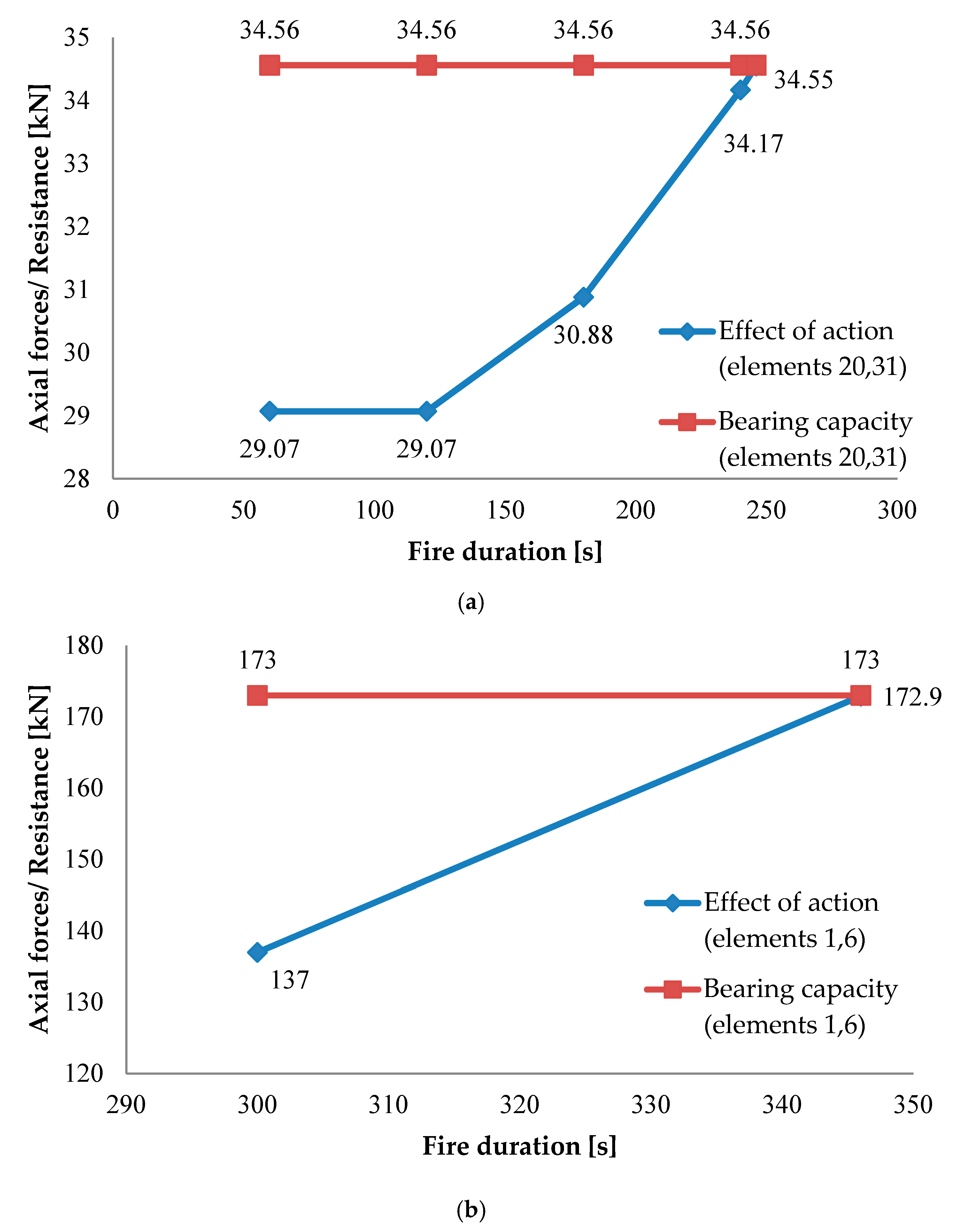

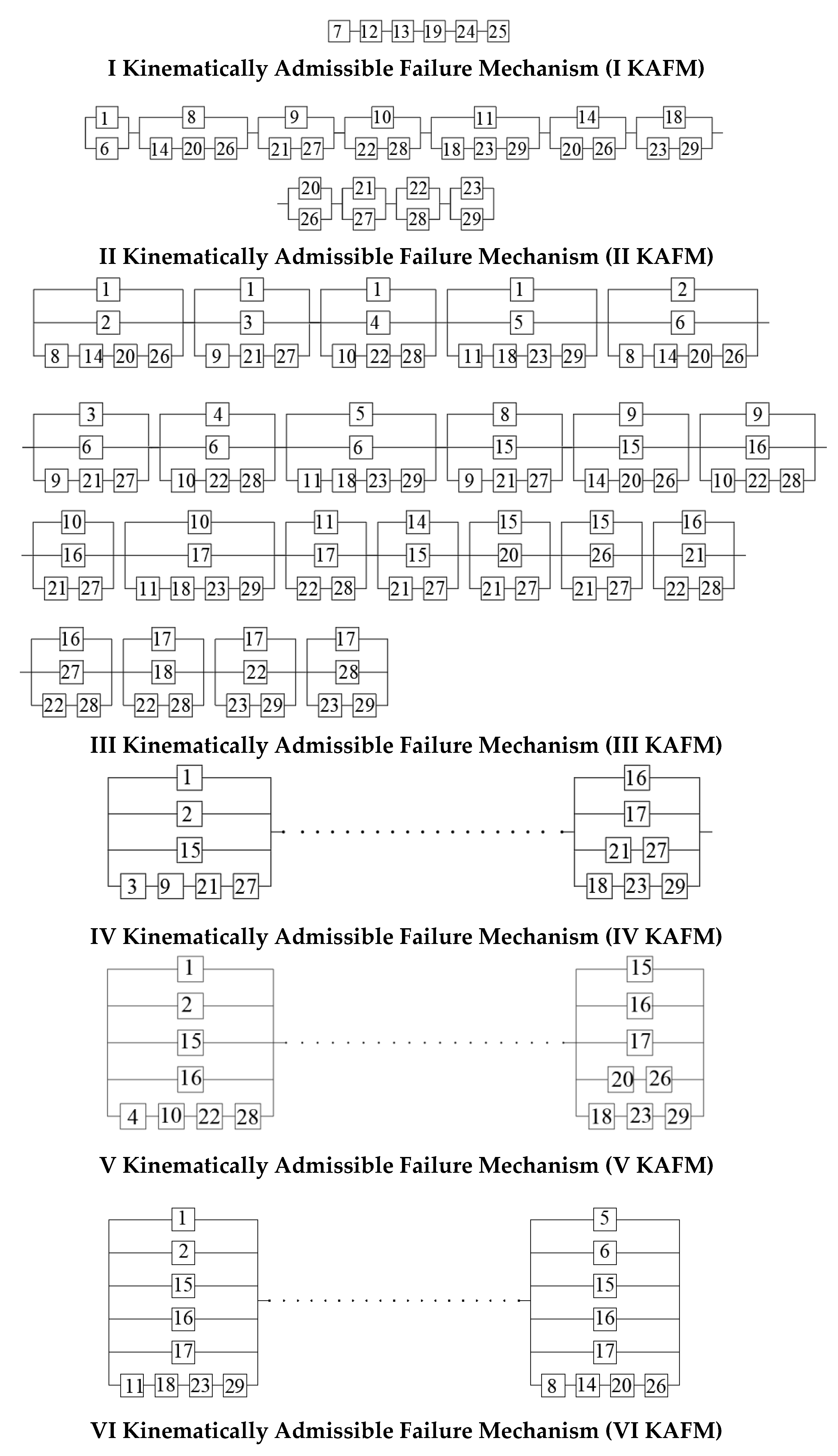
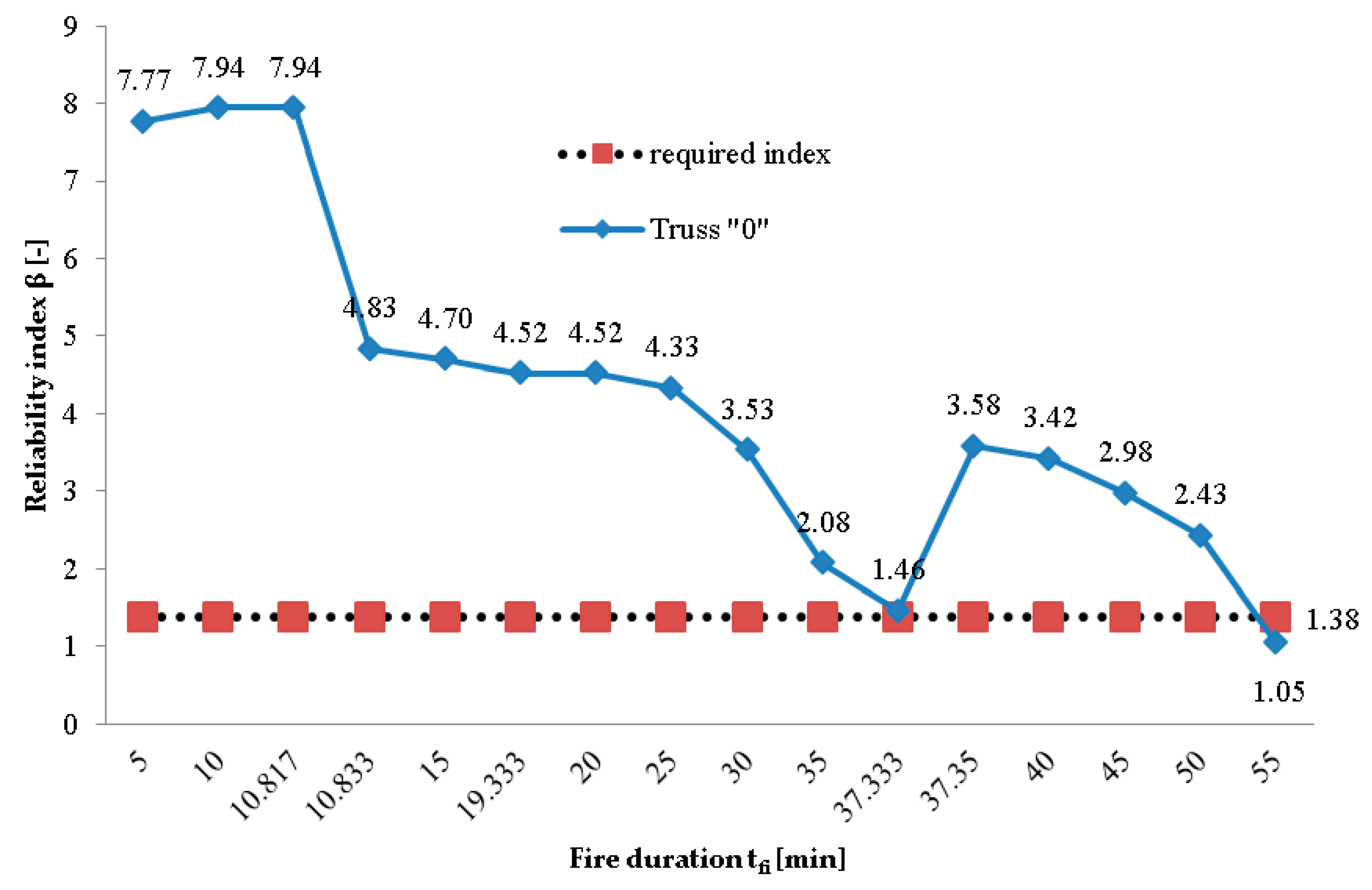

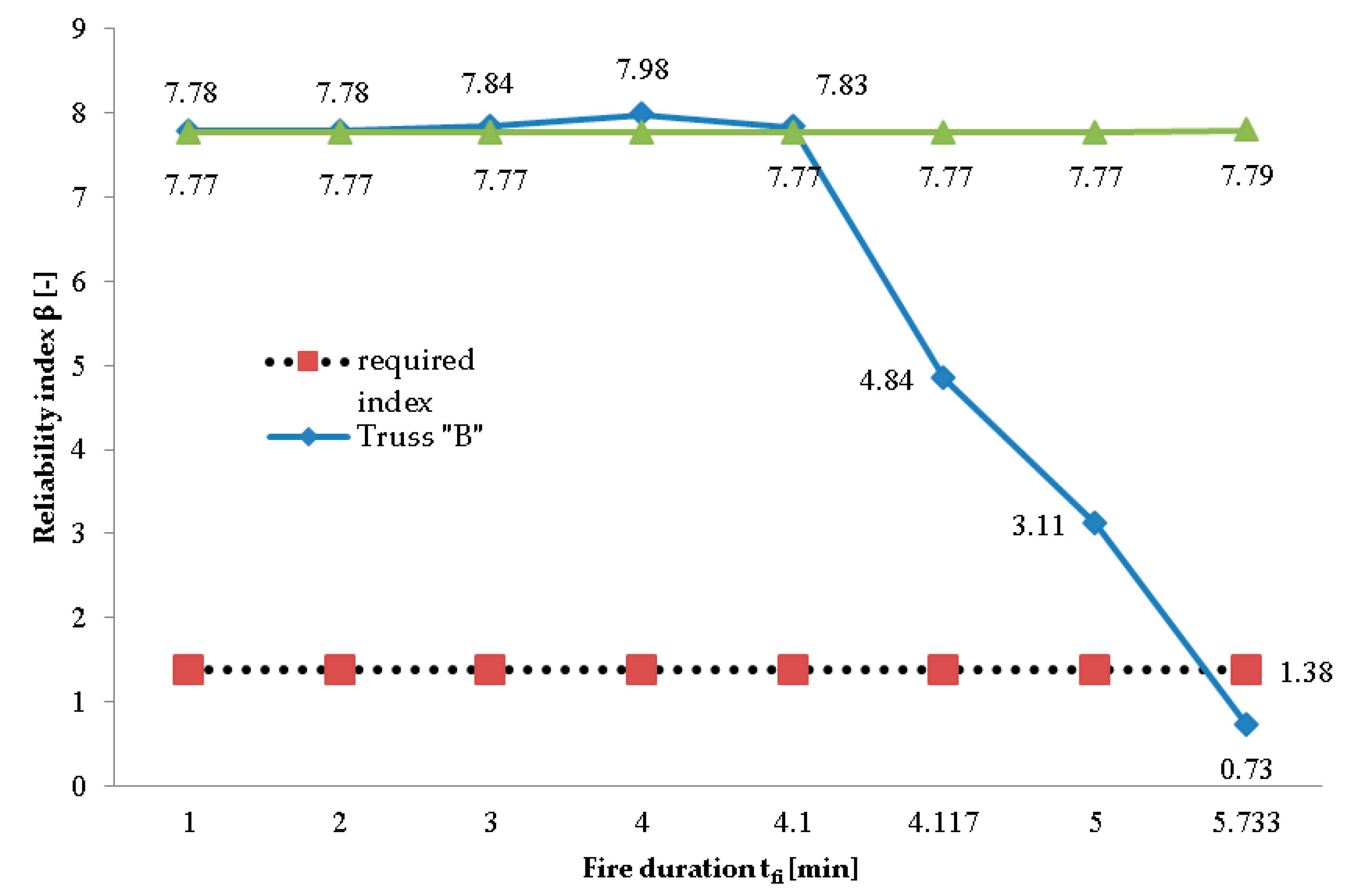
| Number of Causative Elements | Static Scheme I (Figure 2a) | Static Scheme II (Figure 3a) | Static Scheme III (Figure 3b) | Static Scheme IV (Figure 3c) |
|---|---|---|---|---|
| 1 | - | 8 | 16 | 25 |
| 2 | 44 | 32 | 20 | − |
| 3 | 88 | 56 | 25 | − |
| 4 | 72 | 40 | − | − |
| 5 | 56 | 25 | − | − |
| 6 | 40 | − | − | − |
| 7 | 25 | − | − | − |
| Σ | 325 | 161 | 61 | 25 |
Publisher’s Note: MDPI stays neutral with regard to jurisdictional claims in published maps and institutional affiliations. |
© 2020 by the authors. Licensee MDPI, Basel, Switzerland. This article is an open access article distributed under the terms and conditions of the Creative Commons Attribution (CC BY) license (http://creativecommons.org/licenses/by/4.0/).
Share and Cite
Kubicka, K.; Radoń, U. The Impact of Support Type on the Reliability of Steel Trusses Subjected to the Action of a Fire. Appl. Sci. 2020, 10, 7916. https://doi.org/10.3390/app10217916
Kubicka K, Radoń U. The Impact of Support Type on the Reliability of Steel Trusses Subjected to the Action of a Fire. Applied Sciences. 2020; 10(21):7916. https://doi.org/10.3390/app10217916
Chicago/Turabian StyleKubicka, Katarzyna, and Urszula Radoń. 2020. "The Impact of Support Type on the Reliability of Steel Trusses Subjected to the Action of a Fire" Applied Sciences 10, no. 21: 7916. https://doi.org/10.3390/app10217916





